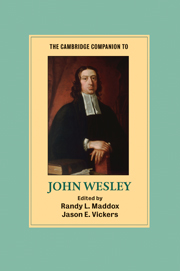Book contents
- Frontmatter
- Introduction
- Part I Wesley’s context
- Part II Wesley’s life
- Part III Wesley’s work
- Part IV Wesley’s legacy
- 14 Spread of Wesleyan Methodism
- 15 The holiness/pentecostal/charismatic extension of the Wesleyan tradition
- 16 The African American wing of the Wesleyan tradition
- 17 Current debates over Wesley’s legacy among his progeny
- Select bibliography
- Index
14 - Spread of Wesleyan Methodism
from Part IV - Wesley’s legacy
Published online by Cambridge University Press: 28 September 2010
- Frontmatter
- Introduction
- Part I Wesley’s context
- Part II Wesley’s life
- Part III Wesley’s work
- Part IV Wesley’s legacy
- 14 Spread of Wesleyan Methodism
- 15 The holiness/pentecostal/charismatic extension of the Wesleyan tradition
- 16 The African American wing of the Wesleyan tradition
- 17 Current debates over Wesley’s legacy among his progeny
- Select bibliography
- Index
Summary
John Wesley stands alone among the originators of the major protestant denominations in his concern for the world lying beyond the boundaries of the old Christendom. Unlike the sixteenth-century reformers, he had been an overseas missionary. Serving with the Society for the Propagation of the Gospel in Foreign Parts, John Wesley arrived in Georgia in February 1736. In addition to his pastoral duties, he recorded in his Journal his intention “to teach the Georgian Indians the nature of Christianity.” This particular episode may be deemed a failure. The indigenous people of Georgia were not the docile innocents of eighteenth-century imagination and Wesley was hardly equipped with an adequate missiology for dealing with non-European cultures. But the sense of a world beyond Europe remained with him to the end of his life, and he consistently looked upon all the world as his parish. Furthermore Wesley expected that a new age was about to break in, when the kingdoms of this world should become “the kingdoms of our God and of his Christ” as George Frederick Handel's Hallelujah Chorus had proclaimed in 1742. Wesley's own expression of this “dawn of the latter-day glory'” is found in his 1783 sermon “The General Spread of the Gospel.”
- Type
- Chapter
- Information
- The Cambridge Companion to John Wesley , pp. 245 - 261Publisher: Cambridge University PressPrint publication year: 2009



